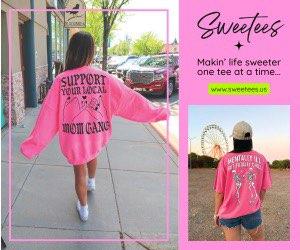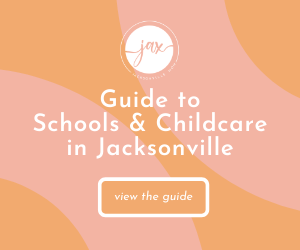“Something You Want, Something You Need, Something To Wear, & Something To Read.“
These are the four presents our son (and starting next year, our daughter) will receive from my husband and I each Christmas. This year that means a Little Tykes grill, a floor bed, a Fox-themed outfit pieced together from a Target sweatshirt and a few Instagram shops, and a Fight Song board book called, “Florida State University 101.”
Before you think we’re total Scrooges–I LIVE for holidays– he’ll also get Christmas pajamas on Christmas Eve, a stocking on Christmas morning, and a big present (this years happens to be a mini climber/toddler slide combo) from Santa. And let’s not forget the plentiful brown paper packages already arriving from Aunts, Uncles, and Grandparents. Phew–even in a home that tries its best at simplicity parenting, it adds up quicker than I like to admit.

It’s wonderful to be able to give him gifts. It’s even more wonderful that friends and family feel the same way and choose to put their resources towards these “special somethings” for our smiley little guy. But presents are not something he’s owed. They are not something that he’s entitled to. They’re an amazing byproduct of the happiness he inspires in us; a physical manifestation of all the love he’s already managed to generate in his short year and a half on earth. So we want our kids to appreciate–and not just expect–every gift they’re given.
Limiting the excess through Want, Need, Wear, Read is just one of the ways that work for our family. My husband and I also try and give experiences as gifts, like the Bay and Bee membership we purchased as Mac’s “Want” last Christmas. We also experimented with a present free first birthday party last June, asking guests to donate money or goods to Friends of Clay County Animals, in keeping with our toddler’s love of dogs.

Friends of ours have had great success simplifying their Hanukkah by leading up to one or two large presents on the final night(s), with the earlier gifts being components or add-on’s to those presents. (IE a doll house, with additional gifts of dolls and furniture. Lego sets also worked well for their son!) I’ve heard of other families taking their cue from the story of the 3 Wise Men, and giving three gifts: Gold (Something the child holds dear/ valuable, like a bike), Frankincense (Something for the soul, like a journal or art classes), and Myrrh (Something for the body, so anything from a new outfit to an appointment for highlights). A quick Google or Pinterest search can work wonders for inspiration.
Admittedly, we have it easy in that we began this tradition of a “simpler season” at birth. Mac and baby #2 will have never known another type of Christmas, or birthday, or Easter basket. But don’t let the ghosts of Christmas(es) past discourage you! Many parents find themselves surprised by the positive reactions of older children when they suggest scaling back the holiday season, especially when they’re included in conversations leading up to the change. Worst comes to worst, even if your mini isn’t on board right away with their presents being trimmed from 14 down to 4, they won’t be surprised when the time comes!
Incorporating some fun feel-good activities to refocus their attention on the giving and not the getting will definitely help ease the transition, too. (Check out some of JMB’s ideas for this December here) The last thing a parent wants is for their children to feel disappointed on Christmas morning, so having these discussions is key. And remember: every little act counts. Don’t feel like you have to go from 8 years of Toys-R-Us-Threw-Up-In-My-Living-Room to Surprise-You’re-Only-Getting-Pajamas-From-Now-On in one fell swoop if you (Or your kids) can’t handle it.
Do what works for your family. What I might consider EXTREMELY CONSPICUOUS CHRISTMAS CONSUMPTION may only be half the holiday giving you’re accustomed to from your own childhood, just as what seems simple to me is still extravagant to families relying on the hope of a donated toy for their child this year.


















